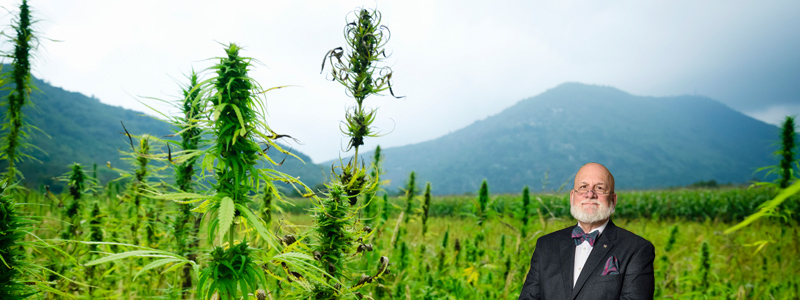Cannabis is popular these days, mainly because of the interest in marijuana (cannabis sativa) for medical purposes. Yes, marijuana is being legalized. Pioneer states, like Colorado are demonstrating that legal pot can be a lucrative business, which will ease a state’s tax woes. Other states, later to the party, are reporting slower starts. A recent report explains that only a few doctors are willing to write prescriptions for using marijuana for a medical reason.
Even though medical use of marijuana is accepted and decriminalized at the state level, it remains categorized by the Federal Government (DEA) as a Schedule I Controlled Substance. Drugs in this schedule have no currently accepted medical use in the United States, lack sufficient evidence of safety, and have a high potential for abuse. Some examples of substances listed in Schedule I are: heroin, LSD, marijuana (cannabis), and 3,4-methylenedioxymethamphetamine (“Ecstasy”).
Fundamentally, when there’s a conflict between any two laws, the more demanding one takes precedence. A state may make a drug legal, but a stricter Federal regulation fails to recognize that more lenient view. In a similar manner, a state might assign a drug greater regulations than the DEA, and so the state control persists. Doctors, like pharmacies, are licensed by both their state and the DEA if they participate in prescribing/dispensing controlled substances.
Those states that have legalized marijuana live in a world of the “nod and a wink” from the Federal authorities – yes, go ahead and do what your state allows, but the Feds can choose to act when it suits their needs. If and when the folks in the DEA or Attorney General’s office choose to act against a professional’s DEA license their interpretation overrides the state’s rules and regulations.
Regardless of the state’s position, a person growing, prescribing, dispensing, or using a Schedule I Controlled substance is in violation of the Controlled Substances Act (CSA) – a Federal offense. The less restrictive decision of a state does not make a substance less likely to be abused. Until the Federal Government modifies the CSA, marijuana remains on the Schedule I list.
While unlikely to be prosecuted, some doctors hesitate to prescribe “medical marijuana”. Additionally, not every doctor accepts the wide spread reports about the health benefits of marijuana.
There is an alternative to using marijuana that some claim offers the same health benefits without the risk of abuse and subsequent legal action. Hemp is a form of cannabis that delivers none of the psychotropic actions, yet is still reported to offer health benefits. Several companies sell cannibidiol (CBD).
There are several other uses for the hemp plant. The seeds can be toasted and chefs use them for flavoring. The stalks are fibrous and can be woven into very strong ropes. In fact, during the early part of the 20th century farmers were required to grow some hemp to meet the needs of the military. Hemp can be made into paper and even cloth.
In Illinois, a person wanting to have a commercial hemp crop must be licensed by the Illinois Department of Agriculture (INDUSTRIAL HEMP ACT). Of course there are roadblocks to approval, but once crossed the farmer will find his or herself with a crop that’s easy to grow, harvest, and market. The rules are in place and anyone who meets the qualifications and proves their crop contains zero percent TetraHydroCanibinol (THC, the psychoactive part) can obtain a one year permit to grow hemp.
A valid health goal for 2016 (and beyond) would be to encourage farmers to get involved and start growing hemp. I’m doing a small part by publishing this blog. If you know any farmers, ask them to take a serious look at commercial hemp.

